Gingham is a lighter fabric made up from either 100% cotton or a cotton blend mixed with polyester like a polycotton or other fibres depending on the end use. Gingham is a traditional name originating from Malaysia, however, during the 17th century when the fabric was imported in to Europe other countries such as India, Indonesia and even France have claimed the fabric to have originated from there.
The unique quality of the material is the bright coloured stripe and then evolved in to a chequered design similar to other plaid fabrics.
India and Indonesia were able to produce large quantities of gingham due to the scale of production of the textile/ linen industry. Gingham was originally made with three main colourways, red and white, blue and white or yellow and white. The dyes used were all natural like madder, indigo and turmeric. Natural dyes were easily accessed in India and Indonesia therefore production was on a larger scale and able to export to other continents.
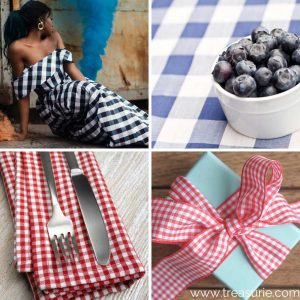 |
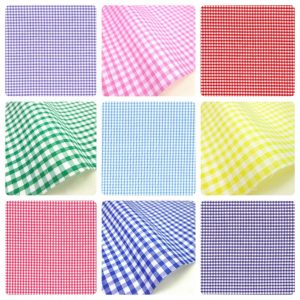 |
The material has always been a popular option throughout the world, especially in America throughout the southern states during the 1920’s up until the late 80’s when gingham started to change dramatically and other designs and materials became popular. Internationally gingham represents different spiritual symbolisms and uses compared to other countries using gingham as a practical fabric.
Usage and Applications in accessories and dressmaking
Gingham fabric materials can be used in dress making, other type clothing and also in many interior accessories. Given below are detail applications and usages of Gingham fabrics.
 |
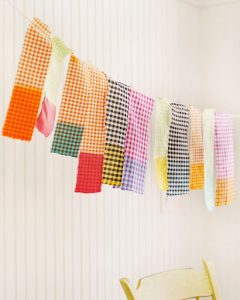 |
Fashion clothing and dresses
Gingham dresses started out in the early 19th century which were designed and sewn as Victorian dresses with lots of volume and fabric flowing. The style of dresses changed throughout history but the same fabric was used, this is due to the simple design aesthetic which was very powerful and bright. Gingham was also very easy to clean and maintain compared to silks and other very expensive materials especially during the 18th century.
Cotton shirts were made up from gingham for both male and females up to the late 1980’s. The style kept evolving from loose fitting to something more tailored, however, the makeup of the material has been the same with slight changes with the introduction of polycotton and synthetic mixes with cotton.
Some school uniform is made up with gingham due to the lightweight material and simple chequered pattern, the material is easy to clean and durable enough to use for everyday use.
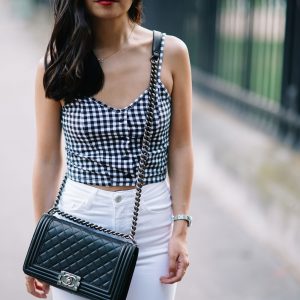 |
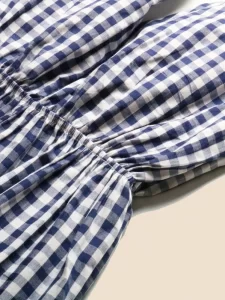 |
Home interior & decoration accessories
Interior accessories such as tablecloths, thin curtains or veils, cushions and dishcloths are all products that have been made up using gingham over the years and they have all been very popular with interior designers to design a room after the wars with simple materials that give a fresh lighter feel to the interior. As pre-war the interiors were very lavish and heavy, this was a shift in design and aesthetic.
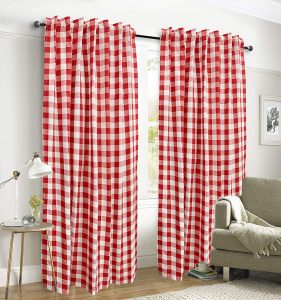 |
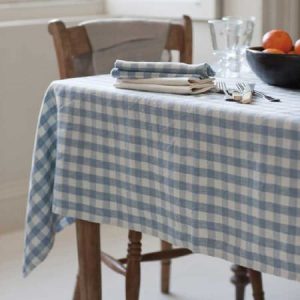 |
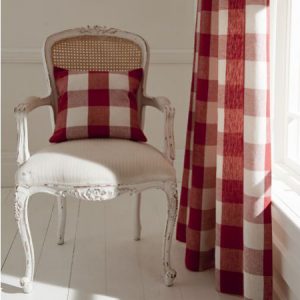 |
 |
Summary
Gingham has been a flexible material that has been used and re-used over the years always coming back with a different aesthetic, however, the makeup of the fibres within the material has stayed the same with a few improvements like the introduction of polycottons and a new combination of improved fibres.
Using gingham on various different projects will be easy and stress-free, the maintenance of the material and aftercare is similar to cotton or linen, it is easy to put in the wash and ironed as usual it makes it an easy material to use everyday with limited maintenance and durable enough to withstand day to day use.
Checkout our list of Gingham Fabrics.